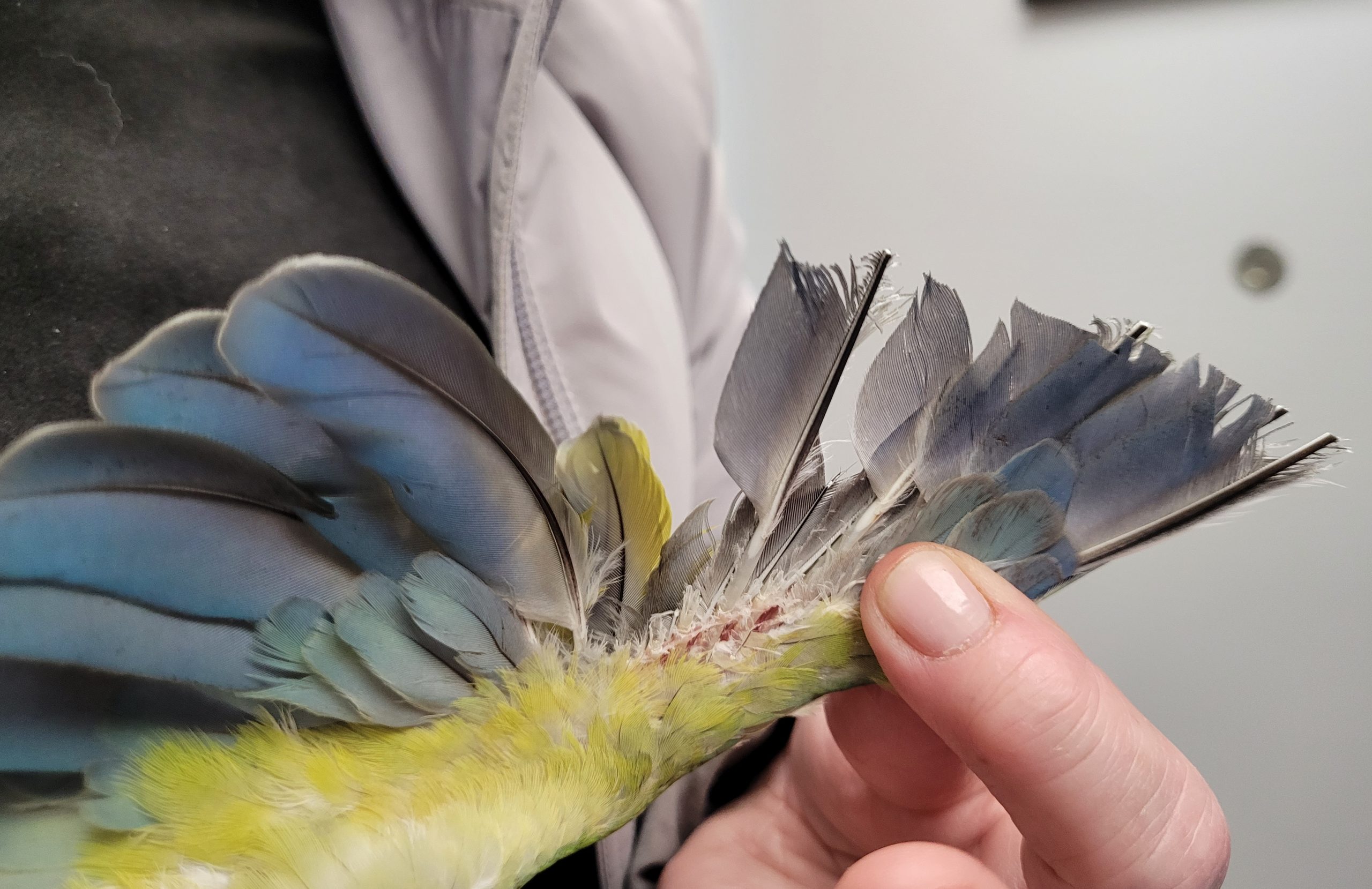-
Adopt
-
Veterinary Care
Services
Client Information
- What to Expect – Angell Boston
- Client Rights and Responsibilities
- Payments / Financial Assistance
- Pharmacy
- Client Policies
- Our Doctors
- Grief Support / Counseling
- Directions and Parking
- Helpful “How-to” Pet Care
Online Payments
Referrals
- Referral Forms/Contact
- Direct Connect
- Referring Veterinarian Portal
- Clinical Articles
- Partners in Care Newsletter
CE, Internships & Alumni Info
CE Seminar Schedule
Emergency: Boston
Emergency: Waltham
Poison Control Hotline
-
Programs & Resources
- Careers
-
Donate Now

By Anne Staudenmaier, VMD, DABVP
![]() angell.org/avian
angell.org/avian
avianexotic@angell.org
617-541-5139
February 2023
x
x
Pain in Exotic Animal Species
Recognition and control of pain in any species is a key component of well-rounded medical care. Untreated pain has been shown in human medicine to slow wound healing and negatively impact mental health. Unfortunately, pain can be hard to appreciate in animals, especially exotic animal species. Most of these animals, including predatory species like ferrets or birds of prey, are prey species themselves and often hide signs of pain extremely well to decrease the risk of attack and death.
Pain is the unpleasant sensory and emotional experience associated with actual or potential tissue damage and requires processing by the central nervous system. When evaluating pain in our exotic species, it is important to appreciate that any animal can perceive noxious (unpleasant) stimuli. Nociception is the process by which the nervous system encodes these stimuli and requires no input from the central nervous system – think of the reflex of pulling your hand away from a hot stove. Pain is associated with and results in learned avoidance – we can think of this as a person learning to stay away from hot stoves after getting burned. All animals, including invertebrates, have shown evidence of learned avoidance in studies. Therefore, we must assume that all sentient organisms have the capacity to experience pain and must approach any potentially painful procedure or disease process with this in mind, even if we cannot outwardly see any obvious signs of discomfort.
Pain in Small Mammals
Recognizing pain in our small mammal species is often the easiest of all exotic species. They are most similar to dogs and cats and display facial expression changes associated with pain. It is still important to note that rabbits and rodents are prey animals and very good at hiding signs of extreme discomfort. A freeze response is quite common in these animals when approached by predators – including people – and often masks changes to facial expressions.
That being said, the grimace scale developed by Dr. Matthew Leach and the National Centre for the Replacement Refinement and Reduction of Animals in Research provides a reliable and objective assessment of facial changes associated with pain in rabbits, mice, and rats and can be extrapolated to other small mammals as well. A rounded “fluffy” face, whiskers with a downward curl, wide orbits, and ears facing sound sources are associated with a comfortable animal. Narrowing of the eye (orbital tightening), flattening of the cheeks causing the face to appear more angular, rotation of the ears (toward the back/hind end in rabbits and curled forward in rodents), and stiffening of the whiskers to stand out from the face are all signs of significant pain. Generally, the more angular the face, the more significant the pain is for the animal.

Figure 1. Comfortable rabbit with wide facial features (top) versus angular, narrowed facial features indicating discomfort (bottom)
Pain in Avian Species
As we move away from mammals, signs of discomfort can be more difficult to assess. Humans rely heavily on facial expressions and cues to pick up on pain. Outside of the class Mammalia, facial muscle movements are not utilized as frequently for communication or expression.
Birds’ display of pain can differ depending on the type of bird: parrots and poultry tend to be social species and show different signs than birds of prey and other solitary species. Over-preening of a painful area and decreases in “self-care” behaviors, like grooming, vocalizing, and playing, are common signs of pain in most birds. Separating oneself from the flock in social species and changes in behavior are often seen with discomfort, as well. Again, since birds are often prey species, clinicians may be required to observe the bird from a distance or rely on owner recognition of abnormalities at home, as signs are often hidden in the clinic unless the bird is significantly debilitated.

Figure 2. Over-preening and feather-destructive behavior on a parrot wing secondary to underlying pain.
Pain in Reptiles, Amphibians, and Invertebrates
Pain recognition in reptiles, amphibians, and invertebrates can be challenging, even for experienced clinicians. Research in these species is limited, and fewer facial muscles and rigid structure to the scales/exoskeleton make looking for changes in facial expression impossible when evaluating for pain. Several surveys given to clinicians and owners of these species for cases associated with pain in other animals found increased aggression, changes in mobility, gaping of the mouth, changes in coloration, and changes in appetite as the most common signs reported. While nonspecific, these signs must be associated with discomfort, especially in diseases considered painful in mammals.
Conclusion
It can often seem daunting to be able to recognize discomfort in animals so far removed from our traditional dogs and cats. What remains most important for the clinician seeing exotic animal species is remembering that signs of pain are often well hidden by most of these animals. Being cognizant that any condition considered painful in dogs and cats should be regarded as painful in other species can go a long way in recognizing and managing pain, hopefully improving clinical outcomes and quality of life for these animals.
x
x
References
- Ayers H. Pain recognition in reptiles and investigation of associated behavioural signs. The Veterinary Nurse. 2016; 7(5): 292-300.
- Keating SC, Thomas AA et al. Evaluation of EMLA for preventing pain during tattooing of rabbits: changes in physiological, behavioural and facial expression responses. PLoS One. 2012; 7(9):e44437.
- Mikoni N, Sanchez-Migallon Guzman D, Fausak E and Paul-Murphy J. Recognition and assessment of pain-related behaviors in avian species: an integrative review. Journal of Avian Medicine and Surgery. 2022; 36(2):153-172.
- Oliver V, De Rantere D et al. Psychometric assessment of the rat grimace scale and development of an analgesic intervention score. PLoS One. 2014; 9(5):e97882.
- Reijgwart ML, Schoemaker NJ et al. The composition and initial evaluation of a grimace scale in ferrets after surgical implantation of a telemetry probe. PLoS One. 2017; 7(4):e35656.
- Upton D and Solowiej K. Pain and stress as contributors to delayed wound healing. Wound Practice and Research. 2010; 18(3): 114-122.